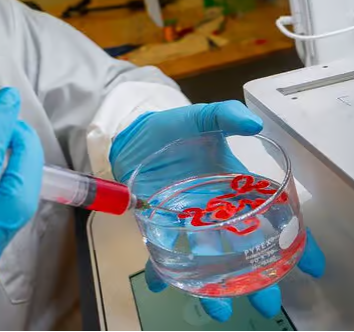Revolutionary 3D-Printer Ink Enables Recyclable Electric Circuits
In a groundbreaking advancement, researchers have developed a novel 3D-printer ink capable of producing recyclable electric circuits. This innovation, hailed as a significant leap forward in sustainable technology, opens new avenues for environmentally friendly electronics, addressing the pressing global demand for reducing electronic waste.
The Environmental Challenge of E-Waste
The rapid proliferation of electronic devices has led to an alarming rise in electronic waste (e-waste), posing significant environmental hazards. E-waste contains toxic substances like lead, mercury, and cadmium, which can leach into the soil and water, causing long-term ecological damage. Moreover, the traditional methods of electronic production often involve non-recyclable materials, exacerbating the e-waste crisis. This new 3D-printer ink, designed with recyclability in mind, offers a promising solution to this growing problem.
The Science Behind the Ink
The innovative ink is a composite material that combines conductive polymers with metal nanoparticles. Conductive polymers are organic materials that can conduct electricity, while the metal nanoparticles enhance conductivity and provide structural integrity. When printed, the ink forms a robust yet flexible circuit that can be integrated into a variety of electronic devices.
One of the most remarkable aspects of this ink is its ability to be easily dissolved and reconstituted. Traditional circuits are difficult to recycle because they are composed of multiple layers of different materials, each with its own recycling requirements. In contrast, the new ink-based circuits can be dissolved in a specific solvent, breaking down the composite material into its original components. These components can then be reused to print new circuits, making the entire process highly sustainable.
Applications and Implications
The potential applications of this technology are vast. In consumer electronics, the ability to create recyclable circuits could lead to devices that are easier to disassemble and recycle at the end of their life cycle. This would not only reduce the environmental impact of discarded electronics but also lower the cost of producing new devices by reusing materials.
In addition to consumer electronics, this technology could be a game-changer in the field of wearable devices. Wearable electronics require circuits that are not only functional but also lightweight and flexible. The new 3D-printer ink meets these criteria while also offering the added benefit of recyclability, which is crucial as the market for wearables continues to grow.
The technology could also revolutionize the manufacturing process of electronic components. Traditional manufacturing methods often involve complex, energy-intensive processes that generate significant waste. With the advent of 3D-printed circuits, manufacturers could potentially produce components on-demand, reducing waste and minimizing the environmental footprint of production.
Challenges and Future Prospects
While the development of this recyclable 3D-printer ink is a significant achievement, there are still challenges to be addressed before it can be widely adopted. One of the main challenges is scaling up the production of the ink to meet industrial demands. Currently, the ink is produced in limited quantities in a laboratory setting. To be viable for commercial use, researchers will need to develop methods for mass production that maintain the ink’s unique properties.
Another challenge is ensuring the reliability and durability of the printed circuits. In many electronic devices, circuits must withstand high temperatures, moisture, and mechanical stress. While preliminary tests have shown that the new ink-based circuits perform well under these conditions, more extensive testing is needed to confirm their long-term durability.
Despite these challenges, the future prospects for this technology are highly promising. As researchers continue to refine the ink and develop new applications, the potential for widespread adoption grows. If successful, this innovation could significantly reduce the environmental impact of electronic devices, contributing to a more sustainable future.
Conclusion
The development of recyclable 3D-printer ink for electric circuits represents a remarkable advancement in sustainable technology. By enabling the creation of recyclable electronic components, this innovation addresses one of the most pressing environmental challenges of our time—electronic waste. While there are still hurdles to overcome, the potential benefits of this technology are immense. As it moves closer to commercialization, it could usher in a new era of environmentally responsible electronics, transforming the way we produce, use, and dispose of electronic devices.


